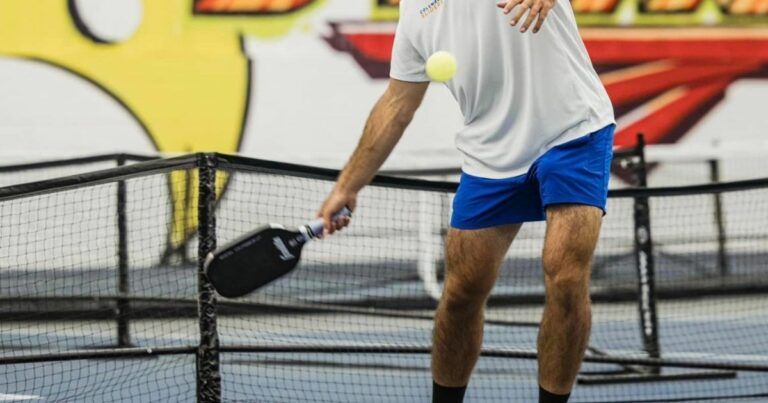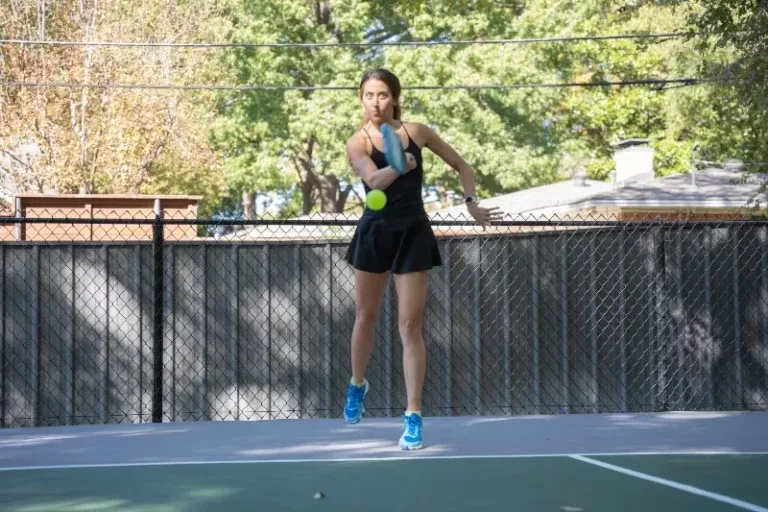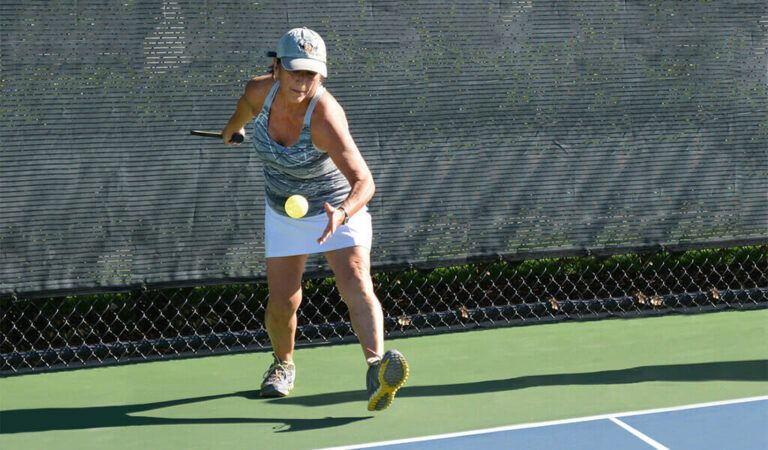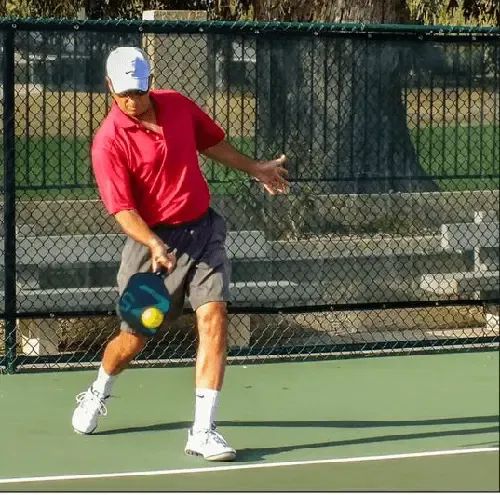Understanding the fundamentals of the pickleball drive serve
What is a pickleball drive serve?
At its core, the drive serve in pickleball is characterized by its focus on speed and power. Unlike softer serves, this technique aims to create a fast-paced entry into the rally that can catch opponents off guard. The flat trajectory of the serve usually stays just above the net, reducing the time and opportunity for effective returns. Not only does this serve apply immediate pressure on your opponent, but it also sets a commanding tone for the rest of the match.

To grasp the significance of the drive serve, one must differentiate it from other serving techniques. While a standard serve may prioritize spin or placement, the drive serve prioritizes aggressive velocity and strategic targeting, often exploited to take advantage of an opponent's weaknesses. For example, serving directly to a player's weaker side, particularly their backhand, can increase the likelihood of mistakes, effectively putting you in the driver’s seat of the match.
Grip essentials for a powerful drive serve
Choosing the right grip can significantly influence the effectiveness of your drive serve. The continental grip is the most commonly used among players, as it facilitates various swing types while maximizing control and stability. However, some players may prefer the eastern grip for added power or a two-handed backhand grip for those who utilize such a technique.
When adjusting for various types of drives, it’s essential to know how different grips impact your control and shot precision. For example, employing a continental grip during a drive serve can allow for better wrist action, leading to increased paddle head speed. It's vital to practice with different grips to discover the one that best complements your playing style and enhances your power and control.
Stance and positioning for maximum power
Achieving a robust drive serve begins with maintaining proper stance and positioning. Whether opting for a closed or semi-closed stance, players should ensure their feet are shoulder-width apart, with knees slightly bent for added stability. The non-dominant foot should be angled forward to help facilitate a powerful upward motion during the serve.

Additionally, focusing on precise footwork techniques can make a considerable difference in generating power. Shifting weight from your back foot to your front foot during the swing enables you to harness the strength of your lower body while maintaining balance. This dynamic movement ensures that your arms and torso work in unison, delivering an explosive serve that can leave your opponent scrambling.
The optimal contact point: Where and when
When it comes to executing a successful drive serve, the contact point is a crucial element. Players should aim to hit the ball consistently in front of their body, ideally at waist height or slightly below. This positioning not only maximizes the amount of power you can impart on the ball but also enhances your ability to apply spin if desired.
A well-timed contact point aids in ensuring that the trajectory of the ball remains low, increasing the difficulty for opponents to react. By maximizing this moment, you create an opportunity to dictate the pace of the rally, allowing you to lead with aggression while maintaining control of the game.
Follow-through mechanics for control and consistency
The follow-through is often overlooked, yet it plays a significant role in the outcome of your drive serve. A relaxed and natural follow-through that extends across your body helps to maintain balance after impact. This control not only stabilizes your posture but also allows for proper spin application and directional accuracy.
The impact of follow-through mechanics goes beyond just placement; it also affects how the ball behaves post-serve. For instance, a smooth follow-through can enhance topspin, enabling the ball to dip sharply after crossing the net, complicating the opponent’s return. Understanding and practicing follow-through dynamics are essential to honing your drive serve and achieving precision.
Advanced drive serve techniques: Adding spin and deception
Once you've mastered the foundational elements of the drive serve, consider exploring advanced techniques like incorporating spin and deception. These strategies elevate your serve and increase unpredictability, making it even more challenging for opponents to anticipate your movements.

Generating topspin for controlled power
Applying topspin to your drive serve can significantly improve its effectiveness. To achieve this, players must lift the paddle from a low position to a higher one during contact. The result is a serve that not only carries more velocity but also clears the net with a safe trajectory and dips into the opponent's court.
Controlled topspin can allow for strategic placement, putting extra pressure on your opponent, as they grapple with handling a rapidly descending ball. Many successful players rely on this technique to manipulate the game tempo and keep their opponents guessing.
The slice drive serve: A strategic variation
The slice drive serve functions as a tactical variation of the standard drive serve. Executing this serve effectively requires a different approach, wherein players cut across the ball to generate a sharp side spin. This technique can be particularly useful when aiming to pull opponents off the court or disrupt their rhythm.
Utilizing a slice serve allows players to target the weaker sides of their opponents, creating opportunities for an aggressive follow-up shot. Knowing when to deploy the slice drive can be a game-changer, as it can catch even seasoned players unprepared.
Varying speed and trajectory to keep opponents guessing
The element of surprise is crucial to mastering any serve, especially in pickleball. By varying the speed and trajectory of your drive serves, you ensure that your opponent is constantly on their toes. Mixing in slower drive serves with ultra-fast shots adds an element of unpredictability that can disrupt their timing and rhythm.
Additionally, modifying the trajectory of your serves can significantly affect your opponent's reaction time. By delivering serves with varying arcs, you force them to adjust their footwork and positioning, creating further opportunities for offensive plays on your part.
The deceptive drive serve: Misdirection and disguise
To enhance the effectiveness of your drive serve, consider adding a layer of deception. Hiding your intended target until the last moment can leave your opponent guessing and anxious. Through body language and correct paddle positioning, you can create the illusion that you are serving in one direction while actually sending the ball elsewhere.
Deception in serving creates an advantage that goes beyond physical skill; it plays on your opponent's psychology, leading them to misread your intentions. By frequently utilizing misdirection, you not only keep your opponents on their toes but also build confidence in your ability to control the game.
Strategic drive serve placement: Exploiting weaknesses

Driving down the middle in doubles
One of the most effective strategies in doubles play is driving down the middle. This tactic creates confusion between opponents, as they must communicate and decide quickly who will take the return. By sending your drive serve down the center, you can exploit their lack of coordination and increase the likelihood of errors.
This strategy also places pressure on both players, forcing them into a defensive mindset from the outset. An effective drive serve delivered down the middle enhances your team's position and prepares you for a dominant follow-up maneuver.
Targeting the backhand or weaker side
Identifying your opponent’s weaknesses is vital for your serving strategy. Players often have a less reliable side, typically a backhand. Targeting this area with your drive serve maximizes their chances of making a mistake, allowing you to capitalize on their vulnerabilities.
While an aggressive drive serves as the first point of attack, remaining observant of your opponent’s reactions will help you refine your targeting strategy. Eventually, provoking errors and maintaining control will solidify your offensive advantage on the court.
Creating openings in singles with strategic placement
As a singles player, strategically placing your drive serve is essential for dominating the game. Using the drive serve to dictate play allows you to control the flow of the match. By varying the placement of your serves deliberately, you can create openings on the court that unbalance your opponent.
Utilizing cross-court serves while targeting the player's weaker side can create opportunities for a strong follow-up volley or drive. Your ability to manipulate serve placements will establish you as a formidable player and force your opponent to adapt to your strategic patterns.
The drive serve in transition: From baseline to net
Recognizing attackable balls in transition
An efficient drive serve should be encapsulated within a broader tactical framework, particularly when transitioning from the baseline to the net. Recognizing attackable balls those viable for a drive serve allows you to maintain momentum.
During your approach, understanding when to execute the drive serve can set up an advantageous position at the net. Capitalizing on slow or high returns received from your opponents can propel you forward, leading to excellent volley opportunities or further aggression.
Maintaining balance and control while moving
Transitional movement should not impede your serving technique. Adequate footwork and body positioning empower you when executing a drive serve on the move. Strive to maintain stability even as you're transitioning between baseline and net, ensuring that you properly engage your core and shift weight fluidly.
Additionally, practicing serves while on the move can strengthen your versatility, transforming you into a more agile and competitive player in pressure situations.
Common mistakes and how to correct them
Understanding common errors associated with the drive serve can greatly enhance your performance. Here are some pitfalls to be aware of, along with solutions for improvement.
Avoiding hitting into the net
One of the most frequent mistakes players encounter is hitting the ball into the net. Failing to generate enough lift on the drive serve can lead to mistakes, so adjust your swing technique and follow-through to achieve better results. Focusing on maximizing the upward motion during contact can help to prevent this common error.
Correcting flat shots: Adding topspin and lift
Flat shots can often result in easy returns for your opponents. Incorporating topspin and lift into your serves can counteract this tendency. By refining your technique to engage the paddle head from below the ball, you create the opportunity for greater lift and a more effective serve.
Preventing shots from going long
Another common dilemma is shots sailing long beyond the service box. Adjusting your trajectory and applying spin can help keep the ball in play. Focusing on the correct contact point and following through can minimize the chances of this occurring during your matches.
Training drills to master the drive serve
Creating a routine to practice your drive serve is crucial in refining proficiency and enhancing performance. Incorporate the following drills into your training regimen:
Consistency drills: Repetition and accuracy
Establish drills that emphasize hitting the drive serve effectively and consistently. Work on repetition, focusing on accuracy and placement of your serves. Setting specific targets within the service box can help you to sharpen your precision over time.
Power drills: Generating paddle head speed
To elevate your drive serve power, introduce exercises designed to generate paddle head speed. Practicing swinging the paddle with explosive force can enhance your overall acceleration and help to maximize your serve strength.
Placement drills: Targeting specific zones
Incorporating placement drills can dramatically improve your accuracy. Design drills where you aim for specific zones within the service box. The repetitive nature of these drills will help build confidence and ensure you can deliver dependable serves under pressure.
The mental game of the drive serve
The psychological components of serving with power and precision are of equal importance. Fostering a strong mental game can translate to better on-court performance.
Reading your opponent's positioning and weaknesses
Being able to analyze your opponent’s positioning is crucial for serving effectively. Observing their stance and maneuverability can provide context to exploit weaknesses. Use this knowledge to inform your service strategy and capitalize on openings.
Handling pressure situations: Staying calm and focused
Serving during high-stress moments can often lead to lapses in performance. Employ mental techniques such as deep breathing and visualization to maintain composure during crucial points in the game. Staying focused can influence the quality of your serve and by extension, the match.
Developing confidence in your drive serve
Confidence in your drive serve is vital for execution. Developing a pre-serve ritual or routine can significantly reduce anxiety and improve focus. Strategizing about your serving approach will transfer confidence that can positively impact the match outcome.
Equipment and technology for enhancing your drive serve
Paddle selection: Finding the right fit
Choosing the right paddle can also influence your drive serve dramatically. Consider the weight, material, and shape of the paddle, as these characteristics will affect how your serves perform. Invest time in testing various paddles to find one that complements your style and maximizes your serve potential.
Using ball machines and video analysis for improvement
Incorporating technology can be advantageous in refining your serve technique. Using ball machines allows consistent practice of your drive serve in a controlled environment. Additionally, video analysis helps track progress, allowing players to visually assess their techniques and make necessary adjustments.
Case studies: Analyzing professional drive serves
Learning from professional players can yield insights into effective serving techniques. Here are two valuable components analyzed from professional pickleball matches:
Identifying key techniques used by pros
Skillful pros employ reflective grips, dynamic stances, and precise follow-throughs in their serves. By focusing on these techniques, you can emulate and learn new strategies that can significantly enhance your performance, progressively transitioning your style to incorporate effective elements observed in pro games.
Learning from different drive serve styles
Different professional players often showcase unique drive serve styles. Analyzing their approaches whether they rely on power, spin, or placement can enrich your understanding of serve strategies, offering opportunities to adapt techniques that suit your game and improve effectiveness.
Conclusion: Elevate your game with the pickleball drive serve
Mastering the drive serve is not only a remarkable technique; it is a fundamental tool that offers a significant advantage in competitive play. By understanding its mechanics, practicing consistently, and applying advanced strategies, players can transform their serves into potent weapons that dictate the pace and direction of each match. Whether you're a novice or a seasoned player, focusing on the nuances of the drive serve will ultimately elevate your gameplay and provide a competitive edge in every match. Embrace the challenge, hone your skills, and watch as your game evolves when equipped with the power of the drive serve.










